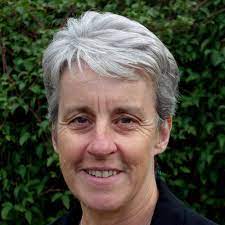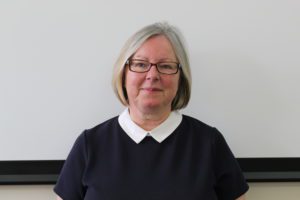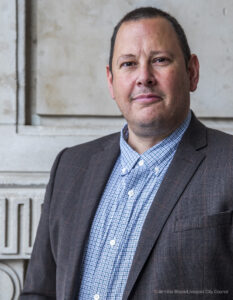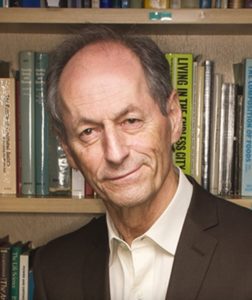 On the 4th March 2003 in Aintree, the first meeting of the Cheshire and Merseyside Public Health Network took place. At the launch event, chaired by Janet Atherton, then the Director of Public Health for Sefton, a vision was set out for an inclusive Network that would work towards improving public health and wellbeing, as well as reducing inequalities.
On the 4th March 2003 in Aintree, the first meeting of the Cheshire and Merseyside Public Health Network took place. At the launch event, chaired by Janet Atherton, then the Director of Public Health for Sefton, a vision was set out for an inclusive Network that would work towards improving public health and wellbeing, as well as reducing inequalities.
This commitment to public health collaboration, and the shared aim to improve health and wellbeing and reduce inequalities, has stood the test of time and 20 years later, continues, now as the Champs Public Health Collaborative.
Since then, Directors of Public Health and their teams have worked together with partners in Cheshire and Merseyside to do extraordinary things, from being a key player in advocating for the smoking ban, to responding to a once-in-a-lifetime pandemic.
How did the Network start? What was it like in the early days? How did it develop as the years went on? And what were the challenges and opportunities Directors of Public Health worked on together throughout the years? Let’s explore…
Shifting the balance of power

Dr Ruth Hussey CB, OBE, DL
There’s a fairly simple answer to why the opportunity was there for the Public Health Network to be developed, says Dr Ruth Hussey CB, OBE, DL, who at the time was a Director of Public Health in Liverpool: “In 2002, there was a significant change in how health and care was being organised, brought about by the NHS Reform and Health Care Professions Act 2002, which sought to shift the balance of power within the NHS.
“This new policy shift abolished the district health authorities and created Primary Care Trusts (PCTs) and Strategic Health Authorities (SHAs). This created a knock-on effect for public health, as it essentially was being broken up into different PCT areas. I became the Medical Director for the Cheshire and Merseyside SHA and part of the role was to set up a public health network.
“The purpose of the network was to bring together public health staff in the PCTs to aid collaboration and connectivity, as well as make sure that our public health work was incredibly high performing and making a difference.
“There was no blueprint for how to do this, so we had to figure it out for ourselves, but we knew we needed a dedicated support team and a Board to oversee it. Within a year, in 2003, we had the first meeting of the Cheshire and Merseyside Public Health Network, and we carried on from there.”
Day one

Dr Janet Atherton OBE
“There was a tension”, says Dr Janet Atherton OBE, who was a Director of Public Health in Sefton when the Network was formed, “between whether the Network should be as envisaged nationally – to focus on professional development within public health – or if we should aim higher and do more.
“It wasn’t always easy trying to work through this, but I am certain that the many benefits our public health system now reaps from the Collaborative would not have happened were it not for the work we put in to working through the tensions and setting up the Network in the way we did.
“However, we didn’t start completely from scratch. We were fortunate to already have built strong links and a sense of collaboration in Merseyside, thanks to the area’s Health Action Zone (HAZ), which enabled lots of people including Directors of Public Health to work together, but unfortunately a 2002 white paper resulted in the formal end to the HAZs.
“So, it was really quite an unstable time, we were trying to get established on the new PCT Boards and ensuring that public health survived a significant restructure and new way of working.
“In many places, Directors of Public Health were single-handed, and so collaboration and peer support was vital. In those early years we focussed on the priorities in Saving Lives: Our Healthier Nation plan, including early work on Stop Smoking Services and smoking in public places. We also collaborated to ensure the successful set up of the local Health Protection Agency team, a predecessor of Public Health England, and we had a focus on CPD and developing and supporting our public health workforce as much as possible.”
The early years
By 2006, another restructure of the health and care system led to a reduction in the number of SHAs and PCTs, which in many areas also led to the disbanding of Public Health Networks, but not in Cheshire and Merseyside.
“Across the country, there were vastly different thoughts on the value of having a Public Health Network”, says Dr Hussey who became the Regional Director of Public Health for the North West in the reorganisation, “but by this point in Cheshire and Merseyside we felt there was a really strong way of working and we all saw the value of keeping it. There were three public health networks covering the North West at the time, and Cheshire and Merseyside played an important role in showing the benefits of collaboration.
Whilst Public Health Networks had been set up across the country, most didn’t last. “Sadly, many had withered on the vine”, says Dr Atherton, “and I witnessed the impact of this very clearly when I became President of the Association of Directors of Public Health in 2012. I was meeting with different groups of Directors of Public Health, and in many places, they did not collaborate in the same way or work together on shared priorities.
“It was a very different case in Cheshire and Merseyside, and I also feel that the commitment we had to workforce development 20 years ago is really coming to fruition now, as the leaders and senior public health people we now have are the products of a workforce development approach we started when we formed the Network and continued to maintain and build on for the next 20 years.”
The smoking ban
In July 2007, a ban on smoking in pubs, restaurants, nightclubs, work vehicles and most workplaces came into effect across the country. The ban was revolutionary and said to be one of the largest public health interventions the country had seen in over 15 years. However, it didn’t come without a fight, with vested interests attempting to put a stop to the plans any way they could.
A similar ban was already in place in Scotland and Northern Ireland, due to the well-known negative impact that smoking and passive smoking has on health, but fears around the economic impact on hospitality businesses meant plans to introduce a similar ban in England were lagging behind.
What eventually brought about the ban was a public consultation of over 150,000 people, ranging from medical professionals, councils, pub owners, police and the general public, which determined that there was overwhelming support for the ban. However, in order to ensure the consultation provided this result, an incredible amount of lobbying from public health professionals had to take place.

Julie Webster, former Director of Public Health for Wirral
“To this day I still can’t believe we achieved it”, says Julie Webster, who at the time was a Consultant in Public Health in Cheshire and until recently was Director of Public Health for Wirral, before retiring in September 2022. “There was a light bulb moment when we realised that we had to shift our messaging from focusing on the rights of smokers and instead focus on the rights of non-smokers, who were entitled to clean air in their workplaces and when they visited public spaces, so that their health was not harmed by passive smoking.
“Getting the message right was instrumental, as we wanted to protect the rights and health of the majority. We also knew that the majority of smokers supported us and most wished they had never started smoking in the first place, so any help we could give them to stop smoking would be welcomed.”
The impact of the ban on health has been wide-ranging, from a reduction in heart attacks and childhood asthma to a decrease in the number of people who smoke today compared to 2007. In 2023 the UK is said to have some of the most comprehensive tobacco control regulations worldwide but, for many Directors of Public Health, there is still work to be done.
From NHS to local authority
The Health and Social Care Act 2012 brought about significant change to health and care provision in the country, most notably it transferred the remit of public health from the NHS to local councils in 2013. This resulted in a massive shift in funding responsibilities, as well as public health teams changing the organisation they worked for overnight.
For Julie Webster, this move was good news for public health: “With this change in policy, we really felt that we’d won the argument that public health action needed to be much more upstream and that the best place for this to happen would be in councils.
“However, it was still a shock to the system! For many of us, we’d grown up working in the NHS and to have to adapt to a different organisation with different approaches and cultures was challenging and difficult at times.
“We had to get our heads around a much wider range of upstream issues, from regeneration to employment, as well as working in political environments that we weren’t used to. Working with elected members required a new way of getting our messages across. Councillors want to know the ‘why’, they want to hear the voices of local people, what their motivations are, so something as simple as writing a report required a new approach.
“But 10 years later, I’m certain it was the right move and couldn’t imagine public health going back now. Our links with the NHS are vital and something we can always work on, but I feel the mission of public health, to make a difference to population health, address the social determinants of health and reduce inequalities, can only happen if we are based in our local councils.”
It was also around this time that the Cheshire and Merseyside Public Health Network became the Champs Public Health Collaborative and the dedicated Champs Support Team, which is hosted by Wirral Council and supports Directors of Public Health and their teams, started to become much more established.
A Collaborative approach to suicide prevention
 Ruth du Plessis is Director of Public Health in St Helens and for the past two years has been the Collaborative’s Lead Director of Public Health for Suicide Prevention. She explains that: “for many years Cheshire and Merseyside has had a collaborative approach to suicide prevention, with our first strategy being published around 10 years ago. It is because of this joined up approach to suicide prevention that, prior to the pandemic, in Cheshire and Merseyside we were bucking the trend and seeing lower rates of suicide in our area compared to the national statistics, which was a fantastic achievement.
Ruth du Plessis is Director of Public Health in St Helens and for the past two years has been the Collaborative’s Lead Director of Public Health for Suicide Prevention. She explains that: “for many years Cheshire and Merseyside has had a collaborative approach to suicide prevention, with our first strategy being published around 10 years ago. It is because of this joined up approach to suicide prevention that, prior to the pandemic, in Cheshire and Merseyside we were bucking the trend and seeing lower rates of suicide in our area compared to the national statistics, which was a fantastic achievement.
“Every suicide, attempt of suicide or action to self-harm is a tragedy. If someone is in the position where they feel that is their only option, they are suffering, and we need to ensure that support is there when they need it.
“Through the collaborative approach, what we’ve learned so far is that when you focus on preventing suicide, you can. We’ve worked hard to ensure that support is available for every single person living in the subregion, in the form of crisis lines, support packages and joint campaigns to encourage people to talk more openly about how they’re feeling. We’ve also successfully bid for money to fund research and to create support packages for schools, parents, adults, and more, and in 2020 we were officially awarded Suicide-Safer Community status by Living Works, the world’s leading suicide prevention training company.
“We have also recently established a joint Real Time Surveillance system across Cheshire and Merseyside which is incredibly helpful and allows us to do something once and do it well. Other examples of this include our work on setting up our Lived Experience Network, which allows us to include the crucial voices of those with lived experience in our work, and our ‘postvention’ support for friends and family, as we know that suicide does not just impact the individual but those around them too.
“There is much more work to be done, and unfortunately there are many elements that are out of our control. The pandemic has impacted so many people, and I’m now very worried about the cost of living crisis. If you can’t afford to feed your family or heat your home, it’s a tremendous stress and can be fatal. I really do believe that suicide prevention is needed now more than ever, we all need to work together and do our best, do anything we can, for the people we serve.”
The pandemic
On the 11th March 2020, the World Health Organisation declared a novel coronavirus outbreak as a global pandemic, and by 23rd March the UK’s Prime Minister announced a full lockdown to preserve life and protect the NHS.
The COVID-19 pandemic was a global public health emergency that impacted every single person in one way or another. In the UK, 220,000 people lost their lives due to the disease, which may have been much higher were it not for the hard work of public health teams across the country.

Professor Matthew Ashton, Director of Public Health for Liverpool and Lead Director for Communications and Social Marketing for the Champs Public Health Collaborative
To be a Director of Public Health at this time was an experience like no other, says Professor Matt Ashton, who started his role as Liverpool’s Director of Public Health just as the pandemic started: “It was incredibly challenging. There were many, many days of working very, very long hours, all virtually. Now, three years later, I actually struggle to remember some details of what life was like back then.
“We really did throw everything we could at the pandemic to protect our population, both individually in our local places, and collectively across Cheshire and Merseyside, and one of the things I’m really proud of is that in Liverpool, when there were challenges around lack of clarity on national policy, we did things our way and set the standard as public health leaders.
“As a Director of Public Health I was able to utilise my connections across the city, including with Liverpool John Moores University, which was commissioned early on to evaluate the impact of the pandemic on the city and the wider city region, and the University of Liverpool, who supported us on setting up data systems to help understand the impact of the pandemic in real time across the whole of the subregion. Later on, the university also supported us as the first city to pilot live events while we were still in lockdown.”
For Thara Raj, who also started her role as Director for Public Health in Warrington as the pandemic started, to be part of the Collaborative during this time was incredibly valuable. She says: “The way the Collaborative is set up, led by the nine Directors of Public Health and with the support of local authority chief executives, makes for a really good leadership model that really came into its own during the pandemic.
“We had so many opportunities to come together as a system across Cheshire and Merseyside and work on shared priorities, instead of inventing everything separately. An example of this was the dedicated contact tracing Hub we established with Public Health England for more complex cases and settings, which alleviated pressure from national and regional colleagues and allowed us to take a ‘local first’ approach.

Thara Raj, Director of Public Health for Warrington and Lead Director for Health Protection in Cheshire and Merseyside
“The fact we were able to establish this within the Champs Support Team so quickly during that time was really helpful for me as a Director of Public Health and it had the full support from our teams across the patch.
“We also were able to work with the Cheshire and Merseyside Health and Care Partnership on the award-winning joint research project and campaign – Getting Under the Skin – which sought to understand the experiences of ethnic minorities and support them with targeted communications that were bespoke to them. We also had some fantastic campaigns like Kind to Your Mind and Spread the Facts campaign, and more recently Simple Things.”
“This pandemic raised the profile and importance of public health for everyone, our communities, our colleagues, and in the media”, says Professor Ashton, “and we now need to make sure we learn the lessons of the last three years, and work hard together to address the underlying health inequalities COVID-19 has shone a light on.
“The aftershocks are still being felt and unfortunately in public health we now have a much greater challenge on our hands that we did previously. We are facing massive issues with our population’s health and life expectancy; health outcomes were already poor and now they’re getting worse, and our entire health and care system is in distress.
“This also impacts workforce. Our teams were flat out responding to this pandemic and people are still emotionally and physically tired and just want life to be easier.”
Thara agrees: “Thinking back, the enormous effort the local public health teams and the Champs Support Team put in was brilliant, but now there’s quite a lot of exhaustion amongst staff, not just in the NHS.
“I’ve been really heartened by the resilience that our teams demonstrated every single day and I have to say a really big thank you to everyone who played a role in our pandemic response, particularly our local communities who really stepped up and did their bit.
“There’s so much I can take away from that time, but one thing that really makes me happy is how we worked together in the Collaborative. We already had a strong way of working already but now I feel we have a real, meaningful bond and friendship with each other.”
Professor Ashton shares a similar sentiment: “It would’ve been lonely without the Collaborative. We were there to moan at each other when we needed to, but we also took a joint view on many things, we had each other for support and we were able to come up with solutions that we were able to work together on, all for the benefit of our communities. It was invaluable for me.”
Reducing inequalities as a Marmot Community
 In 2019 Cheshire and Merseyside, working together as one health and care system, became a Marmot Community. In doing so, the subregion’s public, private and third sector partners made a renewed commitment to making measurable change to tackle inequalities and improve the health and wellbeing of the local population, supported by leading inequalities expert Professor Sir Michael Marmot and his team at the Institute of Health Equity.
In 2019 Cheshire and Merseyside, working together as one health and care system, became a Marmot Community. In doing so, the subregion’s public, private and third sector partners made a renewed commitment to making measurable change to tackle inequalities and improve the health and wellbeing of the local population, supported by leading inequalities expert Professor Sir Michael Marmot and his team at the Institute of Health Equity.
Partners from across the subregion took part in a series of intensive workshops with Sir Michael’s team, which was combined with the latest research and comprehensive data to produce the All Together Fairer report and Programme.

Professor Sir Michael Marmot
When the report was launched, Professor Marmot said: “So much can happen at local level, as shown by the eagerness of colleagues in Cheshire and Merseyside to grasp this issue with both hands and do everything in their power to change lives for the better.
“It is shocking that a third of residents in Cheshire and Merseyside live in the most deprived 20 per cent neighbourhoods in England. It is vital that local leaders and partners do not accept this as destiny.
“The kind of large-scale change needed cannot be delivered by just one organisation or group of people, which is why I’m delighted to see how closely the public, private and third sectors work together in the subregion, which will prove most helpful when delivering the schemes and initiatives set out in our report.”
“Sir Michael commenting on the strength of our Collaborative doesn’t happen by chance”, says Professor Ian Ashworth, Cheshire West and Chester’s Director of Public Health and the Collaborative’s Lead Director for Population Health, “it has taken us years to get here, 20 years in fact, but all of that hard work means we are now well-positioned to work together to create real, meaningful change for our population.
“We are just at the beginning of this journey, but even within the first year we have so many achievements to shout about, as well as an iron-clad commitment from our NHS and Health and Care Partnership to embed the principles and recommendations of All Together Fairer into their strategies.
“That is true connectivity, cohesion, synergy, whatever you want to call it! And crucially, it is the product of 20 years of hard work, building and building on a unique model of public health collaboration that we now accept as our standard approach to getting things done, but we must remind ourselves that, in fact, it is incredibly special.”
#Celebrating20Years
Keep reading…